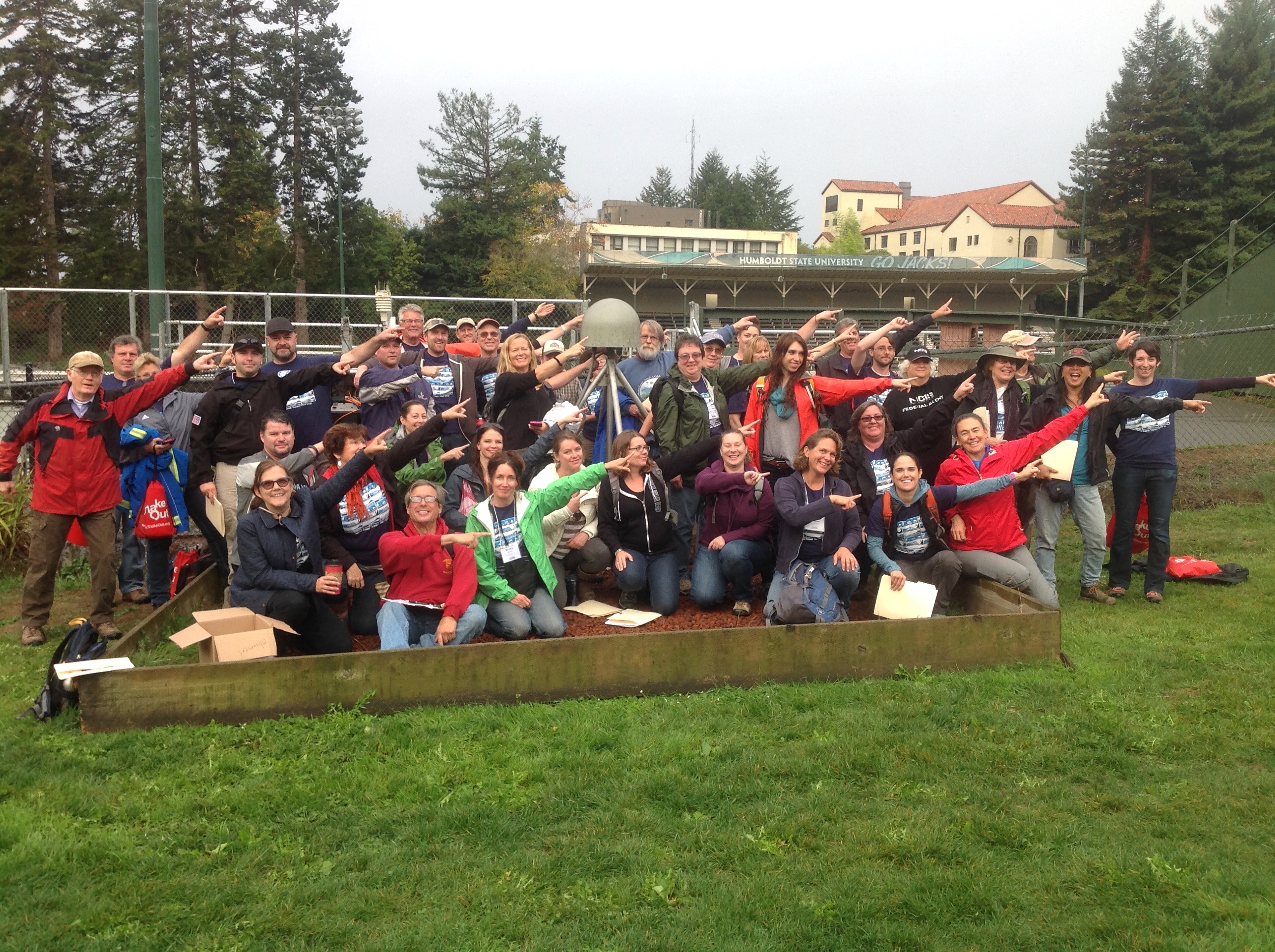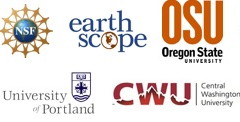October 2015 - Arcata, CA
 Arcata Workshop
Arcata Workshop
Humboldt State University
October 9-12, 2015
Co-sponsored by NSF EarthScope, CEETEP lead institutions, Southern California Earthquake Center (SCEC) and Humboldt State University (HSU).![]()
![]()
Workshop Presentations and Activities:
Presentations by the CEETEP team and invited scientists, educators, and emergency management specialists provided background on Pacific Northwest tectonics, earthquake and tsunami hazards, and community preparedness.
Download Presentations:
Introductions: CEETEP, EarthScope, Participants, Instructors (Beth Pratt-Sitaula)
Beauty and the Beast: Plate Tectonics and Geological Hazards of the Pacific Northwest (Bob Butler)
Basics of Earthquake and Tsunami Science and Hazards and Related Teaching Activities (Bob Butler, Roger Groom)
Surviving a Cascadia Subduction Zone Earthquake (Lori Dengler)
Introduction to Quake Catcher Network and the Great ShakeOut Earthquake Drill (Bob DeGroot)
Cascadia Earthquakes and Tsunami and Related Teaching Activities (Bob Butler, Roger Groom)
Tsunami Are You Ready (Troy Nicolini)
Native American Oral Histories (Vicki Ozaki)
Exchange of Pedagogies: Working Together in Coastal Communities to Engage Learners (Beth Pratt-Sitaula)
Digital Resources [Handout](Beth Pratt-Sitaula, Bob DeGroot)
Preparedness for Post-event Personal and Community Survival (Dorie Lani)
Tsunami Vertical Evacuation Structures (Roger Groom)
Breakout sessions provided participants with opportunities to use their “Tool Box” of teaching supplies, maps and posters. Demonstrations led by experienced classroom teachers helped familiarize participants with their Workshop Notebook filled with plate-tectonic, earthquake, tsunami, and emergency preparedness activities. Related animations and other teaching resources to these presentations and activities can be found on the Teaching Resources pages
Overview Agenda |
|
|
Friday October 9 (Day 1) |
|
|
Saturday October 10 (Day 2) |
|
|
Sunday October 11 (Day 3) |
|
|
Monday October 12 (Day 4) |
Download Activities:
Related files can be found on the workshop DVDs.
1-Human Waves Demonstrate How Seismic Waves Travel
2-Foam Faults
3-SeismicWaves and SeismicEruption
4-Plotting Earthquake Epicenters
5-Earthquake Location
6-USArray Seismic Wave Visualizations
7-World Map of Plate Boundaries
8-Seismic Slinky
9-Earthquake Machine
10-Pasta Quake
11-Earthquake Hazard Maps & Liquefaction
12-Build a Better Wall
13-Base Isolation for Earthquake Resistance
14-Pacific Northwest Tectonic Block Model
15-Cascadia GPS (Gumdrop GPS)
16-Advanced GPS Activity—Locked & Loading
17-ETS (Episodic Tremor & Slip)
18-BOSS Model
19-Types of Pacific NW Earthquakes & the BOSS Model
20-Cascadia Tsunami Geology Photo
21-Turbidites in a Jar
22-Cupcake Geology
23-Dendrochronology
24-Tsunamis and Floods in Native American Oral Tradition and Mythology
25-Emergency Backpack and Emergency Planning
26-Earthquake Hazard Inventory & Mitigation Planning
27-Investigating Factors Affecting Tsunami Inundation—A Science Inquiry
28-Tsunami Vertical Evacuation Structures
29-GPS Cards
30-Next Generation Science Standards
Field Trip:
The field trip day began with a visit to the GPS station on the Humboldt State University Campus, where participants learned how EarthScope instrumentation continuously measures and transmits data on plate-tectonic movements. Thereafter the group worked its way up the coast stopping at Redwood National Park, Lagoon Creek, Crescent City, and Battery Point seeing and discussing a variety of topics from tsunami geology to preparedness and education. Arcata Workshop Field Trip Guide
Action Teams:
Participants were organized into Action Teams with a mix of teachers, interpreters, and emergency management educators from coastal communities. On the final day, each team presented on their plans for post-workshop projects which they would present about at the March 2016 Share-a-Thon
